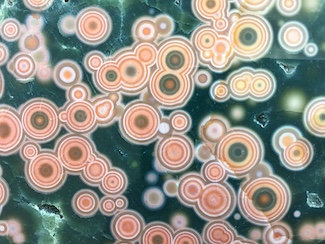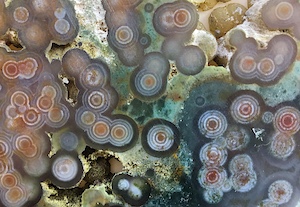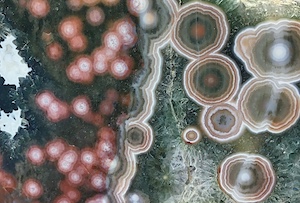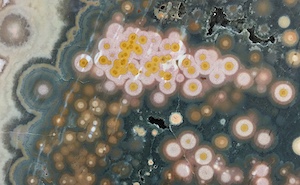Pattern Formation in Ocean Jasper
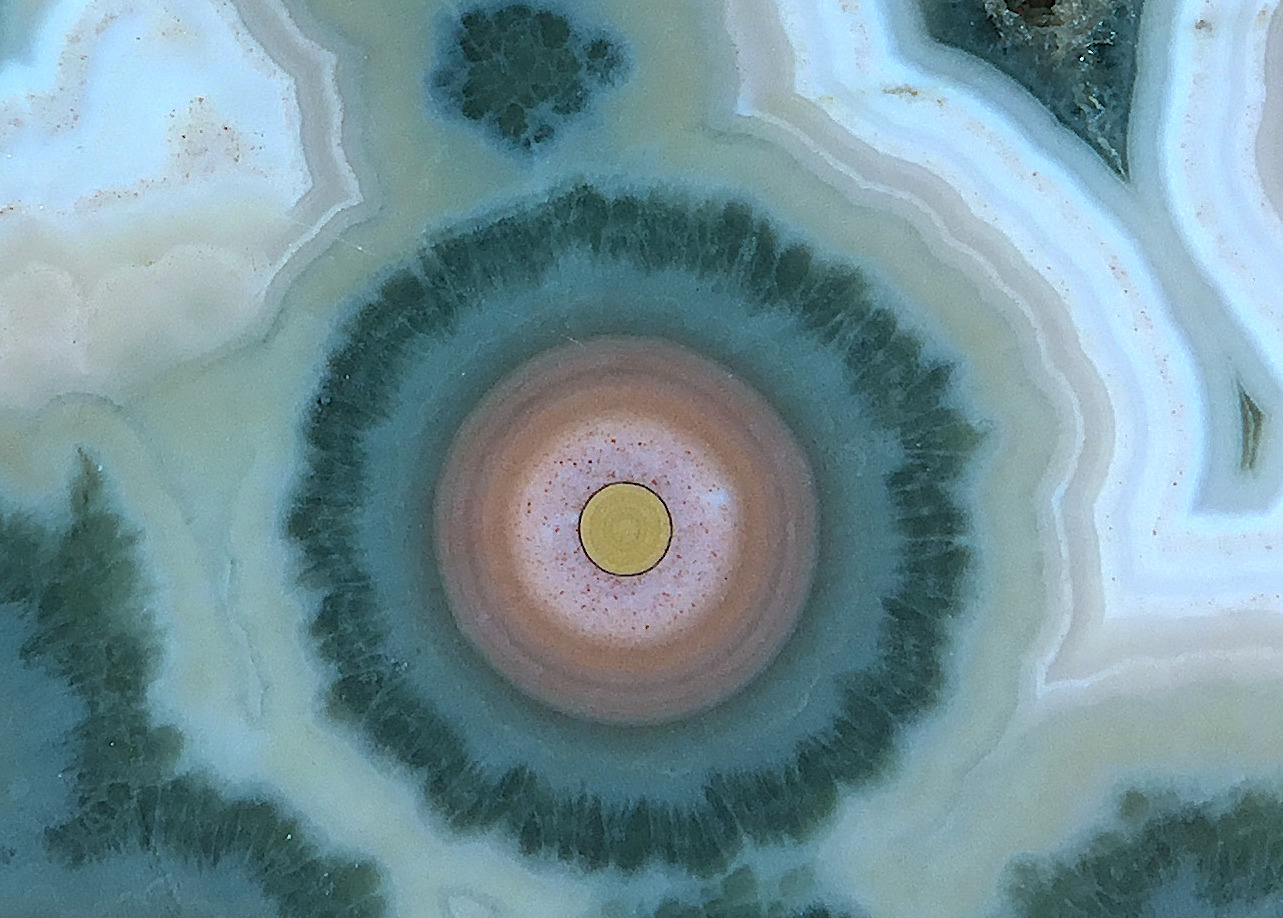
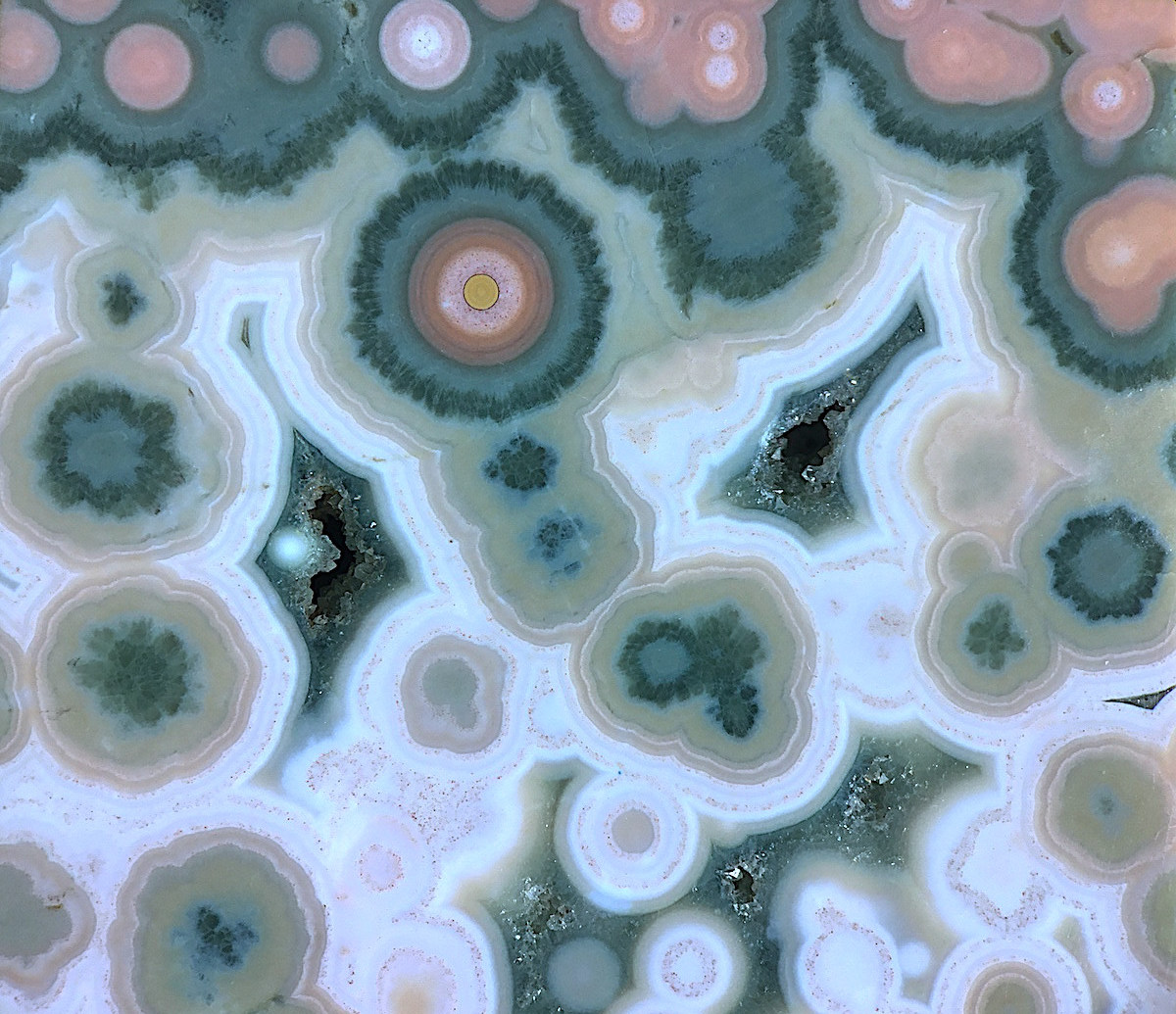
Recently I was asked by a fellow collector about some of the terminology in my book, used to describe the formation processes in the novel model that I proposed there for Ocean Jasper. One of those processes is "reaction-diffusion". In my model, Ocean Jasper is formed from a large-scale ferrous-silica solution that undergoes numerous transitions, including spherulite nucleation and growth, polymerization of the solution into a colloid (gel-sol precursor of the hardened chalcedony/jasper), and precipitation of iron oxide/hydroxide particulates out of solution, which leads to the observed banding and colors in spherulites as well as splays of color in the surrounding colloidal matrix. Reaction-diffusion is a basic dynamic process in chemical systems that are evolving in time. Reaction at one local site (e.g. polymerization or precipitation) followed by diffusion (diffuse motion) of the transformed material(s) to another site. This occurs over a large volume at many microscopic points over time, directing the dynamics of the banded spherulites and the surrounding colloidal matrix. There are resultant "self-organized" patterns from these dynamics. This is the driver for the observed patterns in Ocean Jasper, including spherulite banding. Observed colors are influenced by these dynamics, from the clustering and distribution of particulates with an inherent color, producing an optical effect we perceive as overall color. This is evident in the above close-up photo of a specimen. Reaction-diffusion is important in many biological systems, including cell morphogenesis (shape) and animal markings (eyes on butterfly wings). What a wonder it brings to Ocean Jasper formation!
